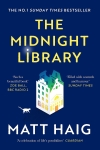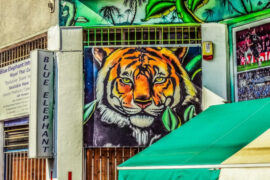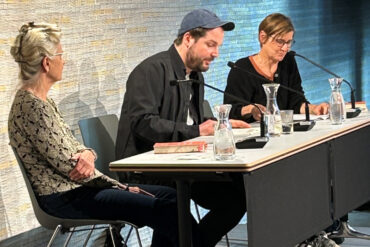Matt Haig’s novel The Midnight Library pictures a library between life and death. It is a book about regret and the deep impact of human decisions.
By Delaram Babaeihamedani
Imagine a library where you can not only discover various books for reading, but also you can live each of the stories. Imagine, if you can pick up a book, open it and live in it as if you have been given a chance to try a new life. It might seem far-fetched, but this is the plot of The Midnight Library by Matt Haig. This novel introduces a new world, one between life and death which you have never seen before. A world in which the protagonist Nora, a 35-year-old British woman, can look back on all moments of her life, her feelings and different decisions passing in front of her eyes like a movie. She is at this library after deciding to end her life because she is not satisfied with it. She is filled with regrets about the past and her previous decisions. She desperately searches for someone or something to come and save her, but she fails, and finally, the visit to the library takes her on a new journey to find the happiest version of her life.
What Is Real Happiness?
The novel deals with the uncertainty of looking for happiness and the disappointment of not finding it. The author seamlessly introduces new characters to provide the reader with a clearer picture of the story. The old librarian, Mrs. Elm, is one of them. She helps Nora with finding the right books among the countless options. Other characters include her family members, ex-boyfriend, and her close friends, and many more characters who offer the opportunity to read different versions of Nora’s life. This helps the reader empathize with every individual.
These different perspectives show the reader how regrets can prevent someone from enjoying the very moment they are living in, and how they long for something which never existed. Nora is so deep in her negative thoughts that she has spent her whole life thinking about her previous decisions. She is filled with questions such as »What if I did not say no to my ex-boyfriend’s proposal?« or »What if I continued swimming?« But the point is that she cannot easily find a certain answer to these questions.
What If We Experience the Same Feelings?
When reading this novel, the reader might feel enticed to ask: »What if I feel the same way?« What if I have the same negative feelings about my own life? Is it possible to alter my choices’ impact on the people in my life, and how? By sympathizing with the protagonist, it becomes possible to see how taking responsibility for one’s life brings happiness. It shows that there are always different perspectives of life.
The novel uses vibrant language to convey its message, yet it allows the reader to pause, stare at the end of a chapter, and ponder how this story can be connected to real life. With its relatable setting and characterization, it opens room for identification: the protagonist is a girl not distinguished by any kind of superpower or surprise, yet she is attempting to find a meaning in life through her decisions.

Matt Haig
The Midnight Library
Viking: New York 2020
304 pages, 26,00$
On the other side, the reader may find the story’s flow stagnant at some parts. The novel’s beginning is so exciting that the reader may barely put the book down. Many climaxes follow one another in a high tempo that makes the reader eager to read more, yet such surprises cannot be expected in the middle of the story — in some chapters the reader can even easily guess what may happen in the following pages. A repetitive incidence pattern may sometimes cause the story to lag, but a very unexpected ending is still on the way.
The Midnight Library tells the story of Nora, yet it is universally relatable for everybody who has felt the pain of overthinking their past decisions. It might unlock feelings of longing to go back in time and do things in a different way for anyone who spent their life according to the expectations of others rather than their own. The image of a library in an unexplored universe becomes a metaphor for life as a massive tome, a jumble of thoughts, feelings, and choices that could lead to many outcomes.






